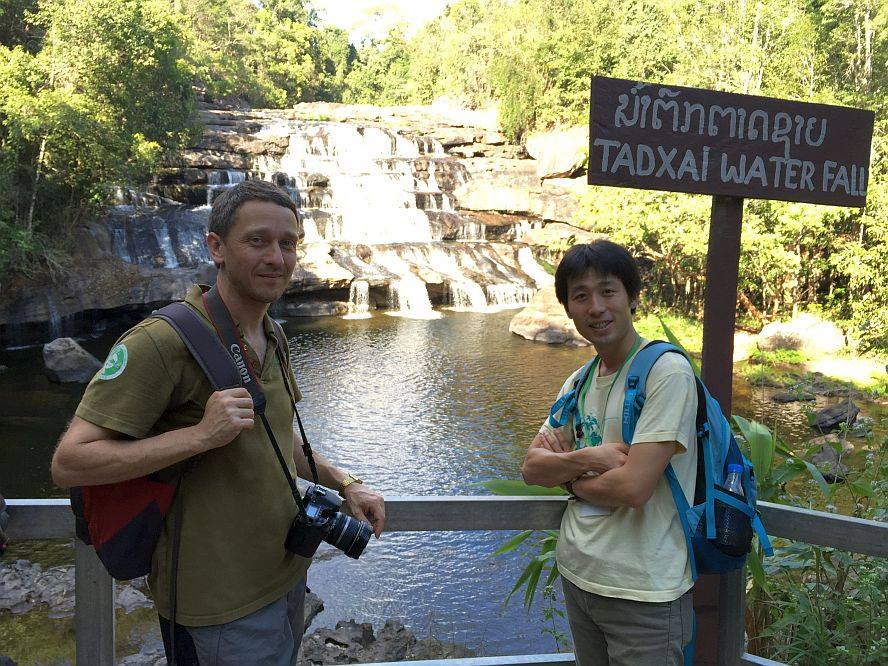

At the end of 2014, I was in New Zealand to discuss with my wife which positions to take next, a one-year postdoc in South Africa or two-years postdoc in China. It was one of the most difficult moments in my life, but somehow I chose CAS President's International Fellowship Initiative (PIFI) to be my next academic position. After nearly half a year, while I struggled to complete required paperwork in Japan, we finally became foreign citizens living and/or working in China.
I have been working on taxonomy and systematics of aquatic/wetland plant groups since I started my research career in Japan. In the last decade or so, while I conducted fieldwork around the world, my areas of focus changed from Japan to East Asia, to tropical Asia to Europe, to North America, to the Southern Hemisphere and then back to tropical Asia. To deepen my knowledge and insights into the Asian tropical element and to seek the key to understanding the evolution of the flora, I submitted a research theme focusing on the Indo-Myanmar biodiversity hotspot to CAS PIFI.
I needed to get a contact with a lab in China prior to the application. From the very beginning of planning this application, I decided to belong to Xishuangbanna Tropical Botanical Garden (XTBG) because a Chinese friend whom I met in a conference in Denmark years ago told me how nice his institute, which was XTBG, is. Among the roughly 30 working groups in XTBG, I selected ‘Plant Phylogenetics & Conservation Group’ organized by Prof. Li Jie. The lab of about a dozen students and three academic staff members is active in publishing papers in plant taxonomy, systematics and ecology. Fortunately, some of them are fluent in English so I didn’t have to learn Chinese and instead spent time pursuing my research. Indeed, I have focused on my own work in Kunming — otherwise I couldn’t have published a dozen scientific papers while in China, which doubled my publication record!! Plus, compared to my previous postdoc years in Canada, Denmark, Hungary and New Zealand, I have received more opportunities on a regular basis in Li’s lab to present my research outcomes in English, which is weird, isn’t it?
Once arrived in Kunming, I was asked where to live because XTBG has its headquarters in Xishuangbanna and a branch in Kunming. The headquarters has many more foreign researchers and thus is an international environment; nevertheless, I decided to stay in Kunming. The decision was correct at least in two ways. Firstly, I can frequently visit Kunming Institute of Botany and its herbarium, China’s second largest plant collection center. Secondly, I can easily access Asian and European big cities by flight. Actually, I have travelled a lot domestically and internationally: Australia, Japan, Malaysia, Singapore and Vietnam for fieldwork, China, England, France and Scotland for herbarium surveys, Australia, China, Japan, Laos and Russia for attending conferences. I have met a lot of botanists and biologists through the activities, which triggered me to launch new research projects and start being involved as a contributor in Flora of Cambodia, Laos and Vietnam, Flora of Singapore and Flora of Thailand.
Our private lives in the Spring City are just great. Li’s lab members are always kind to us and welcome us to dinner parties. Drinking with them is sometimes troublesome as some of them are big drinkers, but the experience is unforgettable. Drinking Chinese tea with them in the lab is one of my most favorite moments. A friendly doorman at the apartment we live in always call me ‘xǐao péng yǒu’. Seasonal fruits and vegetables are tasty and affordable and ‘lìzi’ in Autumn, ‘cǎo méi’ in Spring, and ‘pútaogān’ in all seasons are definitely something without which I cannot enjoy my life. So I thank CAS and XTBG for giving me this great opportunity. I do look forward to having another chance to work in China.

Yu Ito (r) on a field trip (Image by Yu Ito)
Source: CAS